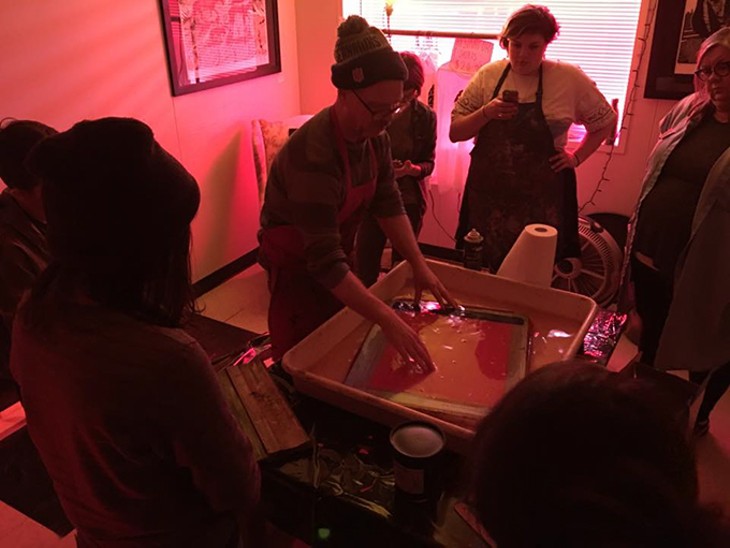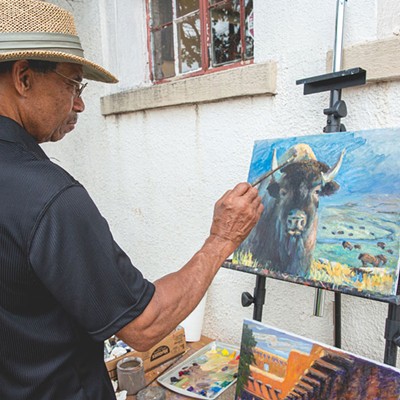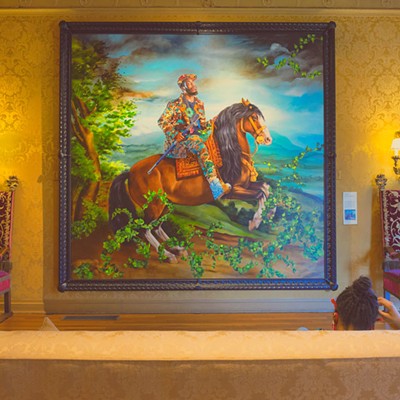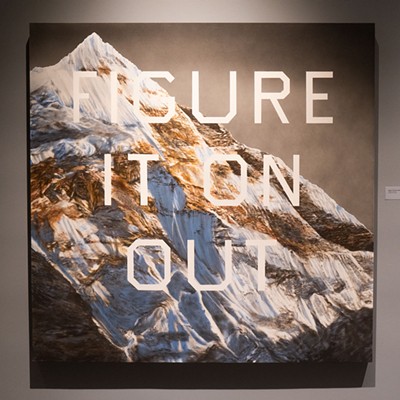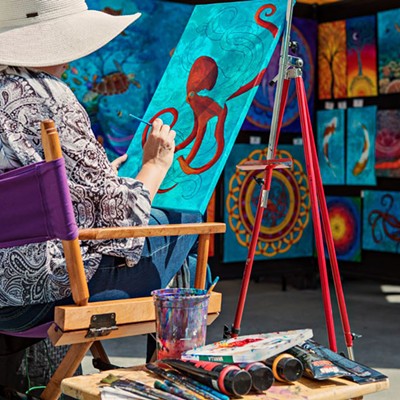A staple of Norman’s artistic community migrates closer to the city’s epicenter this month. Founded in 2016 out of the remnants of Dope Chapel, Resonator Institute has challenged artists and cultivated creative growth through engaging programing and art education. Though the nonprofit grew exponentially in its past home, a converted fabrication warehouse, the recent move brings new opportunities and heightened visibility to the collective.
Resonator’s mission to “inspire and nurture” creative endeavors of all sorts grows only more certain with its recent transformation. Despite a nominal distance from events like Norman Music Festival and the 2nd Friday Norman Art Walk, the institute was able to bring a supplemental experience to the city’s pre-existing happenings. Resonator’s new home at 325 E. Main St., however, pulls it away from the periphery and to the forefront of Norman’s artistic focus.
“The move will expand the scope of what we’re doing by reaching a lot more people,” executive director Curtis Jones said. “While we do many things where we are, this allows us to keep doing what we do while also engaging a lot more wandering people because of our location.”
The shift is not only a tremendous boon for Resonator itself, but also the community at large.
“We decided that this would not only be an ideal move because the new space was within the same guidelines of the old warehouse, but also because it gives us the opportunity to be an active community member along Main Street,” said Jacob Sargent, Resonator’s treasurer and secretary.
Though the relocation might seem to punctuate the collective’s metamorphosis, several recent administrative developments have also allowed Resonator to harness its impact. For instance, the institute’s recent registration as a nonprofit in tandem with the formation of its advisory board has yielded several new opportunities.
“Before we registered as a nonprofit, we had virtually no contracts for artists to sign and no clear volunteer manual for community members wishing to help; we didn’t set out our expectations in writing,” Sargent said. “The development of our advisory board and continued development towards a platform for fundraising forms us into an organization with a solid foundation to continue off of into the future.”
Despite the past space offering many of the accommodations needed to keep Resonator alive, some of the facilities’ limitations hindered the prospect of year-round and consistent activities. However, even the slightest additional amenities have given the collective a new lease on its mission.
“Before, we just didn’t have a functional shop,” Jones said. “The old space was an oven in the summer and a fridge in the winter, and given most of us are printmakers, we could only work in that way a few months out of the year. Now that we actually have climate control, we’re now working to get our education initiative going on a regular schedule.”
Achieving continuity
With the established consistency of the studio, Resonator is able to ensure one of its primary objectives — the ability to share, challenge and cultivate artistic expression is a constant for the institute. Built on a base of proactive Normanites, students and other prospective instructors both domestic and international, Resonator is able to channel its impact locally while also spreading its mission.
Unlike many for-profit galleries and spaces, the success of Resonator is contingent upon continual and diverse communal involvement.
“Many of our instructors aren’t ‘Resonator insiders,’” Jones said. “They’re artists just out there in the community. It’s important we connect with them, as these classes, such as our Alternator courses, are a way to allow people to share a unique experience. We have to tap into the resources that aren’t being used by other institutions.”
Resonator looks to ensure its longevity with a thoughtful and evolving curriculum.
“Our focus right now is to expand the diversity and frequency of the classes we offer, and we’re looking to expand that by incorporating additional qualified art teachers to charge reasonably for classes,” Sargent said. “It’s a tall task of trying to get as much community involvement and support in way that has never happened before in Norman.”
For now, Resonator seeks to establish itself as a beacon of localized artistic ingenuity and development. From there, Resonator can shift to loftier agendas.
“After we’re more established, we can plan towards more specific growth,” Jones said. “For now, we’ll do whatever we can to make the Resonator not just an isolated thing derived from the Norman scene. Instead, we want to think about how we can take the positive parts of our scene and better connect it to local and global communities.”
Resonator is already implementing programming within its new space, and the move is expected to be finished by the end of July. Aug. 10, Resonator will play host to Keyhole Nebula, an exhibition by Derrick Adams, and the institute will serve as a hub for art from Norman’s LGBTQ+ community during the first Norman Pride Festival Aug. 25-26.
Visit resonator.space.

